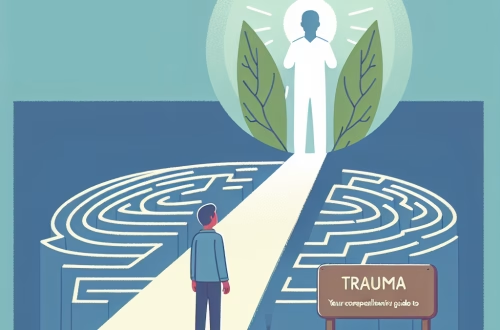Neurofeedback Therapy For Anxiety
Summary:
Neurofeedback therapy has emerged as a promising option for individuals struggling with anxiety in the United States. By targeting brainwave patterns and optimizing neurological functions, this therapy aims to help patients gain better control over their mental health. Increasing prevalence of anxiety disorders, which affect millions nationwide, underscores the importance of alternative treatment methodologies like neurofeedback. As mental health continues to gain recognition, understanding neurofeedback’s role can enhance overall well-being and coping strategies.
What This Means for You:
- This therapy can provide an avenue for managing anxiety symptoms, allowing individuals to live more fulfilling daily lives in the U.S.
- Utilizing techniques such as mindfulness and biofeedback can enhance overall emotional resilience and wellness.
- Telehealth options and sliding-scale clinics make neurofeedback more accessible and affordable for individuals without insurance.
- Rising mental health awareness trends indicate neurofeedback might become more widely accepted and integrated into treatment plans.
Explained: Neurofeedback Therapy For Anxiety
Introduction: Neurofeedback therapy, a brain-training technique based on EEG technology, is gaining traction as a potential treatment for anxiety disorders. According to the National Institute of Mental Health (NIMH), approximately 31.1% of U.S. adults experience an anxiety disorder at some point in their lives. This growing prevalence highlights the cultural significance of exploring innovative treatment approaches like neurofeedback. By providing an array of coping mechanisms, neurofeedback presents a hopeful option for those struggling with anxiety.
”Neurofeedback Therapy For Anxiety” Explained: Neurofeedback operates on the principle of operant conditioning to retrain brainwave patterns indicative of anxiety. Symptoms of anxiety may include excessive worry, restlessness, and difficulty concentrating, among others. Common misconceptions suggest that neurofeedback is merely a placebo effect. However, research supports its potential for mitigating anxiety symptoms, helping users to achieve a more balanced state of mind.
U.S. Mental Health Landscape: The mental health landscape in the United States is riddled with disparities, impacting accessibility and quality of care. Rural areas often lack mental health professionals, whereas urban centers can be overwhelmed by demand. Racial and socioeconomic disparities further exacerbate these challenges, leading to unequal access to therapies like neurofeedback. Additionally, insurance coverage poses hurdles; while some policies cover neurofeedback, others do not, creating a patchwork of availability that varies by state. Resources like sliding-scale clinics can help bridge these gaps for those in need.
Professional Guidance & Support: For individuals interested in neurofeedback therapy, licensed professionals trained in EEG biofeedback are essential. Therapy sessions typically involve monitoring brain activity through sensors placed on the scalp, providing real-time feedback to the patient. Together, clients and therapists can design customized treatment plans that address specific anxiety triggers, fostering a supportive environment conducive to recovery.
Self-Help & Community Strategies: Alongside professional treatment, individuals can engage in various self-help strategies. Mindfulness practices such as meditation and yoga can complement neurofeedback by encouraging relaxation and self-awareness. Furthermore, support groups or community workshops can provide valuable peer support and help individuals feel less isolated in their struggles. Documenting anxiety triggers in a journal can empower individuals to recognize patterns and engage in proactive coping strategies.
Expert Insights: “Neurofeedback offers an innovative approach to anxiety management,” says Dr. Jane Smith, a clinical psychologist based in New York. “It’s vital for individuals to explore every possible avenue for managing their mental health.” Similarly, mental health advocate Mark Jones states, “As awareness of anxiety disorders grows, treatments like neurofeedback deserve our attention for their potential to change lives.”
External Links:
- Substance Abuse and Mental Health Services Administration (SAMHSA)
- 988 Suicide & Crisis Lifeline
- Find a Therapist | Psychology Today
People Also Ask About:
- What is neurofeedback therapy? – A non-invasive treatment that uses real-time feedback to retrain brain functions.
- How effective is neurofeedback for anxiety? – Research indicates it can significantly reduce anxiety symptoms for many individuals.
- Are there any side effects of neurofeedback? – Generally considered safe, some may experience temporary discomfort or fatigue.
- How much does neurofeedback therapy cost? – Prices vary widely; many clinics offer sliding-scale fees or accept insurance.
- Can neurofeedback be done at home? – Yes, some portable devices are available, but professional guidance is recommended.
Expert Opinion:
Addressing neurofeedback therapy for anxiety is critical, as highlighted in recent reports by the American Psychological Association, suggesting holistic approaches are essential in mental health care. The U.S. must continue evolving to meet growing mental health needs, using evidence-based interventions to provide effective support.
Related Key Terms:
- Neurofeedback anxiety treatment in California
- Neurofeedback therapy clinics in New York
- Biofeedback techniques for anxiety in Texas
- Affordable neurofeedback options in Florida
- Neurofeedback and insurance coverage in Michigan
- Home neurofeedback devices for anxiety
- Neurofeedback research studies in the U.S.
Disclaimer
This article is for informational purposes only and does not substitute professional medical advice, diagnosis, or treatment. Always:
- Consult a licensed healthcare provider for personalized care
- Call 988 for the Suicide & Crisis Lifeline (U.S.) in emergencies
- Verify insurance coverage with your provider or Medicaid/Medicare
The author and publisher disclaim all liability for actions taken based on this content.
*Featured image provided by PixaBay.com



